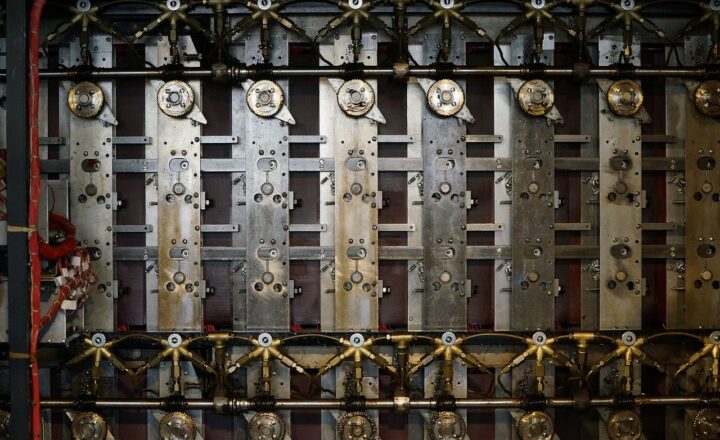The Secrets of Covert Weapons Developed for Undercover Agents and Spies
November 12, 2024

Covert weapons have a rich history, woven tightly into the fabric of espionage and secret operations throughout the ages. Designed for stealth, discretion, and effectiveness, these weapons are not only innovative but also symbolic of the lengths to which nations will go to defend their interests and gather intelligence. This article delves deep into the fascinating world of covert weapons, unveiling the technologies and strategies that underpin their development for undercover agents and spies.
1. The Evolution of Covert Weapons
The landscape of covert weaponry has evolved dramatically from the shadows of ancient warfare to the sophisticated gadgets used by today’s spies. In ancient times, the use of poison, hidden blades, and trickery was commonplace. For instance, assassins wielded blades concealed within everyday objects, such as brushes or canes, allowing for stealthy strikes without arousing suspicion.
Fast forward to the 20th century, the world wars transformed the concept of covert weaponry, giving rise to innovations that combined ingenuity with practicality. Many notable inventions have emerged, including disguised firearms, explosives hidden in ordinary items, and specialized tools that masked their deadly purposes under the guise of mundane objects.
2. Ingenious Designs of Covert Weapons
Modern covert weapons are gadgets of innovation; their designs are often as intricate as the missions they serve. Here are a few notable examples that showcase creativity in covert weaponry:
- The Pen Gun: This specialized firearm resembles a normal pen, allowing agents to carry it without raising suspicion. It fires a small caliber round, making it lethal at close range. In addition to its deadly capacity, its design ensures that it can be easily concealed in a pocket or purse, ready for action when needed.
- Hidden Explosives: Innovations like explosive-laden shoelaces or detonators disguised as everyday items provide paramount concealment. These types of inventions allow agents to plant explosives with minimal risk of detection, deploying them when the time is ripe for calculated strikes against targets.
- Smartphone Gadgets: With smartphones being so ubiquitous, some spies utilize them to mask surveillance devices or even as tools for digital espionage. Certain apps can control cameras or microphones, discreetly obtaining information from environments where the agent cannot be physically present.
These innovative designs showcase the ingenuity required for operators living life on the edge, where the right gadget can mean the difference between success and failure in a mission.
3. The Role of Technology in Covert Operations
Advancements in technology have dramatically altered the landscape of espionage and covert operations. The integration of electronics, robotics, and artificial intelligence has ushered in a new era of covert weaponry. Here are some ways technology has enhanced covert operations:
- Drones: Unmanned aerial vehicles (UAVs) are increasingly used for surveillance missions, enabling agents to gather crucial information from a distance while remaining undetected. Modern drones come equipped with high-definition cameras and can even deliver payloads if necessary, enhancing stealth tactics significantly.
- Biometric Weapons: The introduction of biometric identification has allowed covert operatives to create weapons that can only be activated or utilized by specific personnel. This personalization ensures that weapons remain unusable if they fall into the wrong hands, which is critical in clandestine operations.
- Cyber Covert Ops: As digital footprints expand and hackable networks proliferate, cybersecurity espionage has gained prominence. Covert teams now employ malware and hacking tools as weaponry, exploiting vulnerabilities in enemy systems and collecting sensitive data without the need for physical presence.
The fusion of technology with traditional weaponry underlines the necessity for adaptability and creativity in espionage tactics, allowing agents to execute missions with maximum effectiveness.
4. Noteworthy Historical Examples
Countless historical instances highlight the use of covert weapons in espionage. Understanding these stories provides context to the current advancements in the field:
- The Cold War Espionage: The height of the Cold War gave rise to the infamous “Poisoned Umbrella,” utilized by the KGB to eliminate defectors. The umbrella was equipped with a pellet filled with a deadly toxin, demonstrating the perils faced in the world of international espionage and the lengths spies took to secure their missions.
- The Pen Gun Incident: In the 1970s, an incident involving a pen gun surfaced when a spy attempted to assassinate a foreign official but failed. This incident exemplified the risks and challenges associated with clandestine weaponry and the implications when operations go awry.
- Operation Gladio: A NATO operation established during the Cold War that had agents armed with an array of covert weapons. This operation showcased how covert tactics and weaponry were employed in extraordinary situations amid political turmoil in Europe.
These historical instances help illuminate the significant ramifications and ethical concerns surrounding covert operations and weapons employed in espionage, raising questions about morality and national security.
5. The Ethical Implications of Covert Weapons
The utilization of covert weapons poses serious ethical dilemmas, leading to considerable debate over the moral implications of employing such tools in warfare and espionage. Some pivotal questions revolve around:
- Collateral Damage: Covert operations often involve undercover missions in civilian areas, which can place innocents at risk. Balancing the success of national security against potential civilian casualties raises ongoing ethical concerns on the morality of such tactics.
- Transparency and Accountability: Conducting covert operations in secrecy raises questions about the accountability of intelligence agencies. The lack of oversight can lead to abuses of power and marauding beyond sanctioned actions, contributing to a growing demand for transparency in government operations.
- Global Impact: The international ramifications of using these covert weapons can strain diplomatic relations, especially if they are exposed. The potential for retaliation or escalation of conflict poses serious risks in the global political landscape, complicating the framework of warfare norms and ethics.
As espionage evolves with technological advancements, the ethical front must remain vigilant, addressing concerns while ensuring operations serve the greater good without compromising moral boundaries.
Conclusion
The world of covert weapons is a blend of ingenuity, deception, and complex ethical considerations. As we venture further into an era characterized by technological leaps, the designs and implementations of these tools will undoubtedly shift, promising even more creative innovations for covert operations.
However, as advancements continue, balancing effectiveness with ethical considerations remains essential. Understanding the evolution of covert weapons not only highlights modern militaristic and espionage strategies but also emphasizes the importance of maintaining moral integrity in a world where the line between right and wrong becomes increasingly blurred.








